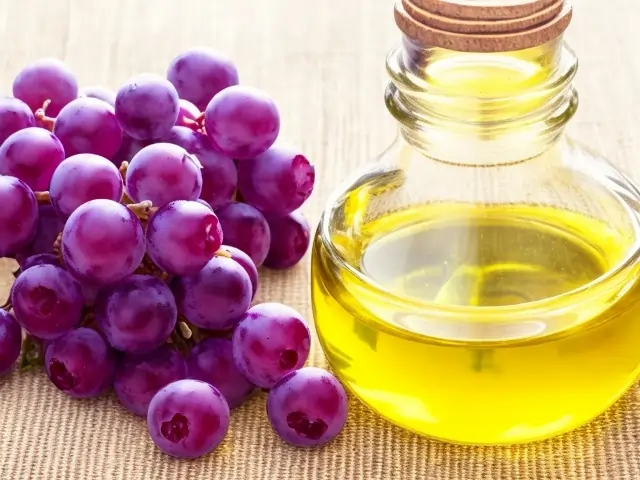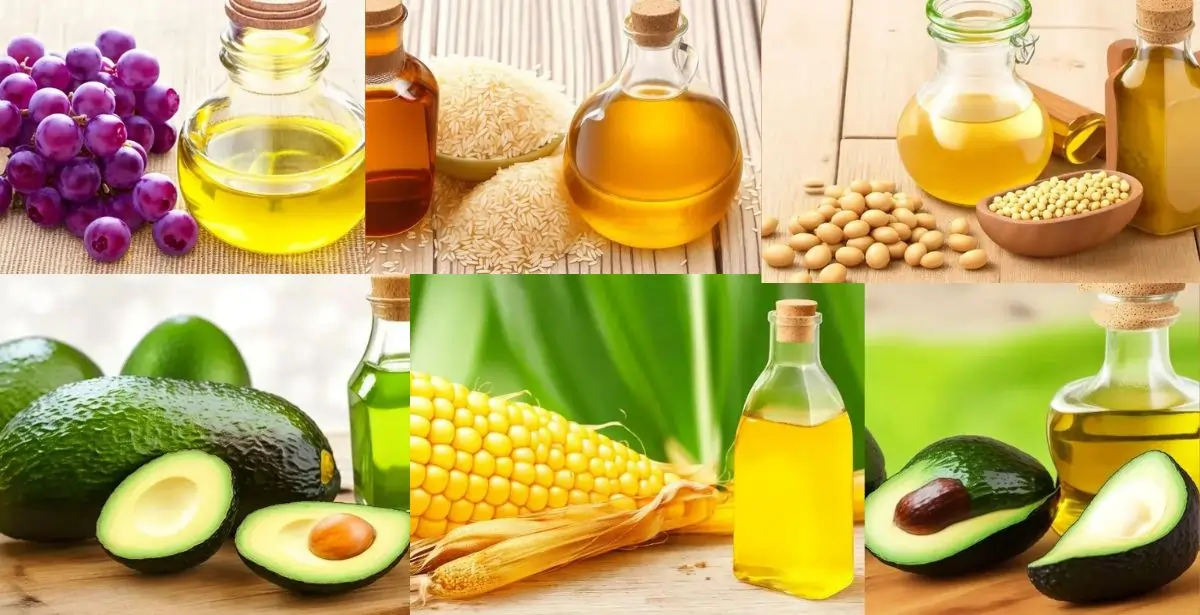Healthiest Oil For French Fries
Are you on a quest to find the best oil for French fries? Look no further! As a dedicated French fry enthusiast, I’ve embarked on an adventure to discover the perfect cooking oil that will take your fries to new heights of deliciousness.
In my experience, choosing the right cooking oil is crucial in achieving the ultimate French fry perfection. With countless trials and experiments, I’ve learned that the oil you use impacts the flavor and texture of your fries.
Standing in the grocery store’s cooking oils and fats aisle can be overwhelming, but armed with knowledge; you can make an informed decision. I’ve tested various options, from avocado to canola oil, corn to grapeseed oil, and even ventured into rice bran and soybean oil.
The best oils for French fries possess two essential characteristics: a neutral to nutty flavor and a high smoke point. These oils ensure your fries retain their natural taste while achieving the perfect crispiness.
Avocado, canola, corn, grapeseed, rice bran, and soybean oil are among the top contenders in the quest for the best oil for French fries. These oils provide the stability required for high-temperature frying without altering the taste of your beloved fries.
So, fellow French fry enthusiasts, embrace the culinary exploration and experiment with different oils to find the one that elevates your fries to a whole new level. It’s time to make your French fry dreams come true with the perfect cooking oil.
Flavorful Fries: Choose Neutral or Nutty Oil
When it comes to flavor, your priority should be allowing the aroma and taste of your French fries to take center stage rather than being overshadowed by the cooking oil. Therefore, it is recommended to choose an oil with a relatively neutral or subtly nutty flavor. Certain oils like walnut, hazelnut, and sesame oil have strong and distinctive tastes that can overpower the fries, resulting in an undesirable and unconventional flavor profile.
While olive oil, particularly extra virgin olive oil, is commonly used for drizzling over salads and preparing pasta sauces, it is not the ideal choice for making French fries. Olive oil can introduce a bitter and peppery taste to the fries, which may or may not be appealing to your personal preference. Thus, it is advisable to avoid using olive oil when frying potatoes for French fries.
Among the oils mentioned earlier, avocado oil and rice bran oil offer a barely noticeable nutty flavor, while corn oil, grapeseed oil, and soybean oil have a neutral taste that does not significantly impact the fries’ flavor. However, there are exceptions to this general guideline, as there may be instances where you intentionally select a more flavorful fat, such as butter or duck fat, to enhance the overall taste of the fries. In some cases, lard or tallow can be chosen to infuse the fries with a rich and savory essence.
It is important to note that when using fats like animal or dairy fat (unless clarified into ghee), caution must be exercised due to their low smoke points. These fats are more prone to burning quickly, resulting in an undesirable acrid taste. Therefore, it is crucial to pay attention to the heat dial and ensure that the oil reaches an appropriate temperature during the frying process.
For more comprehensive information on cooking oils and their respective smoke points, let’s explore the topic further below.
Choosing an Oil with a High Smoke Point for Perfect French Fries
Furthermore, it’s important to note that not all fats are suitable for cooking at high temperatures. Each fat or oil has a specific smoke point, which refers to the temperature at which it begins to break down and emit smoke. Heating an oil beyond its smoke point can produce harmful compounds and an undesirable taste. Thus, choosing a cooking fat with a high smoke point is crucial when preparing French fries.
When frying French fries on the stove, the heat is typically set to medium or medium-high, reaching temperatures around 350°F (approximately 180°C). Therefore, choosing a cooking oil with a smoke point higher than 350°F (≈180°C) is essential. Opting for an oil with a higher smoke point provides a buffer and flexibility in case the pan or pot becomes hotter than average.
To assist you in selecting the right oil, here is a list of commonly available oils found in supermarkets that match the criteria of having a high smoke point.
Refined Avocado oil

I have enjoyed using refined avocado oil in my cooking, and it has been a delightful experience. One of the standout features of avocado oil is its impressive smoke point. Refined avocado oil typically has a smoke point ranging from 400°F to 520°F (204°C to 271°C), making it suitable for a variety of high-heat cooking methods.
IT HAS PERFORMED EXCEPTIONALLY WELL when I’ve used avocado oil for frying or sautéing. The oil maintains stability even at high temperatures, allowing for a crisp and evenly cooked outcome. Whether frying vegetables, searing meat, or making crispy French fries, avocado oil has consistently delivered satisfying results.
In terms of flavor, refined avocado oil has a mild and neutral taste. It doesn’t overpower the natural flavors of the ingredients I’m cooking, which is desirable. Refined avocado oil allows the inherent flavors of the food to shine through, creating a harmonious balance. Whether I’m preparing delicate fish or vibrant stir-fried vegetables, avocado oil enhances the dishes without overpowering them.
Additionally, I appreciate the nutritional benefits of avocado oil. It is high in monounsaturated fats, considered heart-healthy fats that can contribute to a balanced diet. Avocado oil consists of ample amounts of vitamin E, a potent antioxidant recognized for its potential health benefits and positive impact on overall wellness.
It’s important to note that different varieties of avocado oil are available, including unrefined or extra virgin avocado oil, which has a more distinct avocado flavor and is often used for drizzling over salads or as a finishing oil. Refined avocado oil, on the other hand, is well-suited for high-heat cooking due to its higher smoke point and milder taste.
Overall, my experience with refined avocado oil has been highly positive. Its impressive smoke point, neutral flavor profile, and nutritional benefits make it a valuable addition to my kitchen. Whether cooking a quick stir-fry or indulging in homemade fried treats, avocado oil consistently delivers satisfying and delicious results.
Rice bran oil

I have also had the opportunity to incorporate refined rice bran oil into my cooking, which has been an enjoyable experience. One of the standout qualities of rice bran oil is its impressive smoke point. Refined rice bran oil typically has a smoke point ranging from 450°F to 490°F (232°C to 254°C), making it suitable for high-heat cooking methods such as deep-frying, stir-frying, and sautéing.
IT HAS CONSISTENTLY DELIVERED EXCELLENT RESULTS when I’ve used rice bran oil for frying. The oil’s high smoke point allows for a crispy and golden exterior while preserving the natural flavors and textures of the food. Whether I’m frying chicken, shrimp, or vegetables, rice bran oil provides a stable cooking medium that yields deliciously crispy outcomes.
In terms of flavor, refined rice bran oil has a mild and neutral taste. It doesn’t overpower the flavors of the ingredients, allowing the natural essence of the food to shine through. Rice bran oil makes it a versatile oil that can be used in various cuisines and dishes without altering their taste significantly.
Another notable aspect of rice bran oil is its nutritional profile. It is known for its high vitamin E content and other beneficial compounds like antioxidants and phytosterols. These components have potential health benefits, including supporting heart health and reducing inflammation.
Furthermore, rice bran oil is low in saturated fat. It contains a good balance of monounsaturated and polyunsaturated fats, making it a heart-healthy choice for individuals conscious of their dietary fat intake.
In my culinary experiences, rice bran oil has been a reliable and versatile cooking oil. Its high smoke point, mild flavor, and favorable nutritional profile make it a valuable addition to my kitchen. Whether I’m stir-frying vegetables or deep-frying tempura, rice bran oil consistently delivers excellent cooking results while contributing to a wholesome and balanced approach to cooking.
Unrefined Avocado oil

During my wife’s absence, I took the opportunity to experiment with different cooking oils, including both unrefined and refined avocado oil. In both its unrefined and refined forms, Avocado oil proved to be a versatile and delightful addition to my culinary endeavors.
I explored the unrefined version of avocado oil. It has a rich, buttery flavor and vibrant green color, adding a unique touch to various dishes. I used it primarily for dressings, marinades, and drizzling over roasted vegetables. The unrefined avocado oil provided a distinct taste that complemented the freshness of salads and enhanced the flavors of grilled vegetables.
One of the notable benefits of both unrefined and refined avocado oil is its high smoke points, and it can withstand higher temperatures without breaking down and producing acrid smoke. It allowed me to cook confidently at higher heat levels without worrying about the oil’s stability or compromising the flavors of the food.
Additionally, avocado oil is well-known for its nutritional properties. It is a good source of monounsaturated fats, which are considered heart-healthy.
My experience with unrefined and refined avocado oil was highly positive. The unrefined oil added a distinct flavor element to my dishes, while the refined oil proved to be a versatile and reliable cooking oil with its neutral taste and high smoke point. Whether I was creating vibrant salads or achieving perfect sears on meats, avocado oil played a significant role in enhancing the overall flavor and texture of my culinary creations.
Soybean oil

During my camping trip, I brought along a bottle of soybean oil to handle my cooking needs in the great outdoors. Soybean oil quickly became my trusted companion, offering practicality and excellent performance in the rugged camping environment.
One of the standout features of soybean oil was its high smoke point. This attribute proved invaluable as I cooked over an open fire or on a portable camping stove. The oil maintained stability even when exposed to high temperatures, ensuring my meals were cooked evenly without burnt or acrid flavors. Whether grilling meat, sautéing vegetables, or making campfire stir-fries, soybean oil held up admirably, allowing me to achieve delicious results.
Regarding flavor profile, soybean oil provides a neutral and versatile taste. This neutrality worked to my advantage as it allowed the natural flavors of the camping ingredients to shine through. From fresh vegetables to marinated meats, the soybean oil subtly enhanced the flavors without overpowering them. It provided a reliable foundation, allowing me to create various meals that were satisfying and full of campfire-inspired goodness.
Soybean oil’s versatility extends beyond just cooking meals. It also came in handy for various other camping needs. I used it to lubricate grill grates, prevent food from sticking to utensils, and even as a moisturizer for wooden cutting boards. Its multi-purpose nature made it a valuable asset during my camping adventures.
Overall, my experience with soybean oil during my camping trip was exceptional. Its high smoke point and neutral flavor allowed me to cook delicious meals over the campfire without concerns about oil breakdown or overpowering tastes. Soybean oil proved to be a reliable and versatile cooking companion, enhancing the flavors of my outdoor culinary creations and adding to the enjoyment of my camping experience.
Corn oil

As the ship’s chef, I had the pleasure of using corn oil in my culinary adventures, and it quickly became a staple in my kitchen. One of the standout qualities of corn oil is its high smoke point, which makes it ideal for various cooking methods that require high temperatures.
When it came to deep-frying, corn oil truly shined. Its high smoke point allowed me to achieve perfectly crispy and golden results without the oil breaking down or imparting unwanted flavors to the food. Corn oil consistently delivered exceptional frying outcomes, from crispy fried fish to delectable tempura.
Regarding flavor profile, corn oil offered a mild and neutral taste. This characteristic made it incredibly versatile, allowing the ingredients’ natural flavors to take center stage without overwhelming them. Whether I was preparing savory dishes like stir-fries or baking delicious treats like cornbread, the subtle flavor of corn oil complemented the overall taste and enhanced the dishes’ appeal.
Another advantage of using corn oil was its versatility beyond cooking. I often used it as a base for homemade salad dressings, where its neutral taste blended seamlessly with various herbs, spices, and vinegar. Corn oil’s light and smooth texture helped create well-balanced dressings that added a delightful touch to salads and other dishes.
Additionally, I found corn oil to be a healthier option than other cooking oils. It is low in saturated fat and contains beneficial fatty acids, which aligns intending to promote healthy dining options for the ship’s crew. The knowledge that I was using a quality oil that contributed positively to their well-being was satisfying.
My experience with corn oil as the ship’s chef was incredibly positive. Its high smoke point, neutral flavor profile, and health benefits made it an invaluable ingredient in my kitchen. From deep-frying to dressing creations, corn oil consistently delivered excellent results and allowed me to create delicious meals that left the crew satisfied and eager for more.
Grapeseed oil

As a chef, I had the pleasure of incorporating grapeseed oil into my culinary repertoire, and it quickly became one of my go-to cooking oils. One of the standout features of grapeseed oil is its high smoke point, which makes it an excellent choice for various cooking methods that require high heat.
Regarding sautéing and stir-frying, grapeseed oil proved to be a reliable companion. Its high smoke point allowed me to achieve the perfect sear on meats and vegetables without worrying about the oil breaking down or emitting a burnt taste. The result was beautifully caramelized ingredients with a delightful texture and color.
Regarding flavor profile, grapeseed oil offers a light and neutral taste. This characteristic made it a versatile oil that didn’t overpower the natural flavors of the ingredients I worked with. Whether I was preparing delicate fish dishes or vibrant vegetable stir-fries, grapeseed oil allowed the ingredients to shine through while providing a subtle, pleasant background note.
Another advantage of grapeseed oil is its versatility beyond cooking. Its light and delicate flavor made it an excellent choice for homemade salad dressings and marinades. The oil blended seamlessly with herbs, spices, and acidic ingredients, enhancing the overall flavor profile and adding a touch of sophistication to the dishes.
In addition to its culinary attributes, grapeseed oil is also known for its health benefits. It is rich in polyunsaturated fats and low in saturated fat, including omega-6 fatty acids. This nutritional profile aligns with my commitment to promoting healthier options in my cooking, providing a sense of satisfaction that I was using oil that contributed positively to the well-being of those enjoying my dishes.
Overall, my experience with grapeseed oil as a chef was highly positive. Its high smoke point, neutral flavor profile, and healthful properties made it a valuable ingredient in my kitchen. From sautéing to dressing creations, grapeseed oil consistently delivered exceptional results and allowed me to create flavorful and wholesome meals that left a lasting impression on diners.
Our Picks on Best Oil for French Fries
Heavy Duty Canola Liquid Frying Oil

The Admiration Fry-n-fry Heavy Duty Canola Liquid Frying Oil is a top-notch choice for all your frying needs. Packaged in a convenient 35-pound container, this oil is designed to deliver exceptional frying performance. Made from high-quality canola oil, it offers a neutral flavor that allows the natural taste of your food to shine through. With its high smoke point, this heavy-duty oil can withstand the rigors of deep frying, ensuring your French fries come out crispy and golden every time.
Whether you’re cooking for a small gathering or a large event, the generous size of the container ensures you’ll have plenty of oil to go around. Trust in the reliability and quality of Admiration Fry-n-fry Heavy Duty Canola Liquid Frying Oil for all your frying adventures.
Bakers & Chefs Clear Frying Oil

Bakers & Chefs Clear Frying Oil, available in a convenient 35-pound container, is a reliable and versatile choice for your frying needs. This clear frying oil is specially formulated to provide excellent frying performance and consistent results. With its neutral flavor, it allows the natural flavors of your food to shine through without overpowering them. The high smoke point of this oil ensures that it can withstand the heat required for deep frying, resulting in crispy and delicious fried foods. The generous size of the container makes it suitable for both personal and commercial use, ensuring you have an ample supply on hand. Trust in Bakers & Chefs Clear Frying Oil to deliver quality and satisfaction in all your frying endeavors.
Blog Post Conclusion
FAQ on Best Oil for French Fries
Q: What is the best oil for making crispy French fries?
The best oils for crispy French fries are extra virgin olive oil, peanut oil, canola oil, avocado oil, and sunflower oil.
Which oil has the highest smoke point for frying French fries?
Avocado oil and sunflower oil have the highest smoke points, making them ideal for achieving crispy fries without compromising flavor.
Can I use olive oil for frying French fries?
Yes, extra virgin olive oil can be used for frying French fries, providing a unique flavor and health benefits to your fries.
What is the difference between canola oil and sunflower oil for frying French fries?
Canola oil has a mild flavor and versatile nature, while sunflower oil offers a neutral taste and a high smoke point, both contributing to crispy results in French fries.
